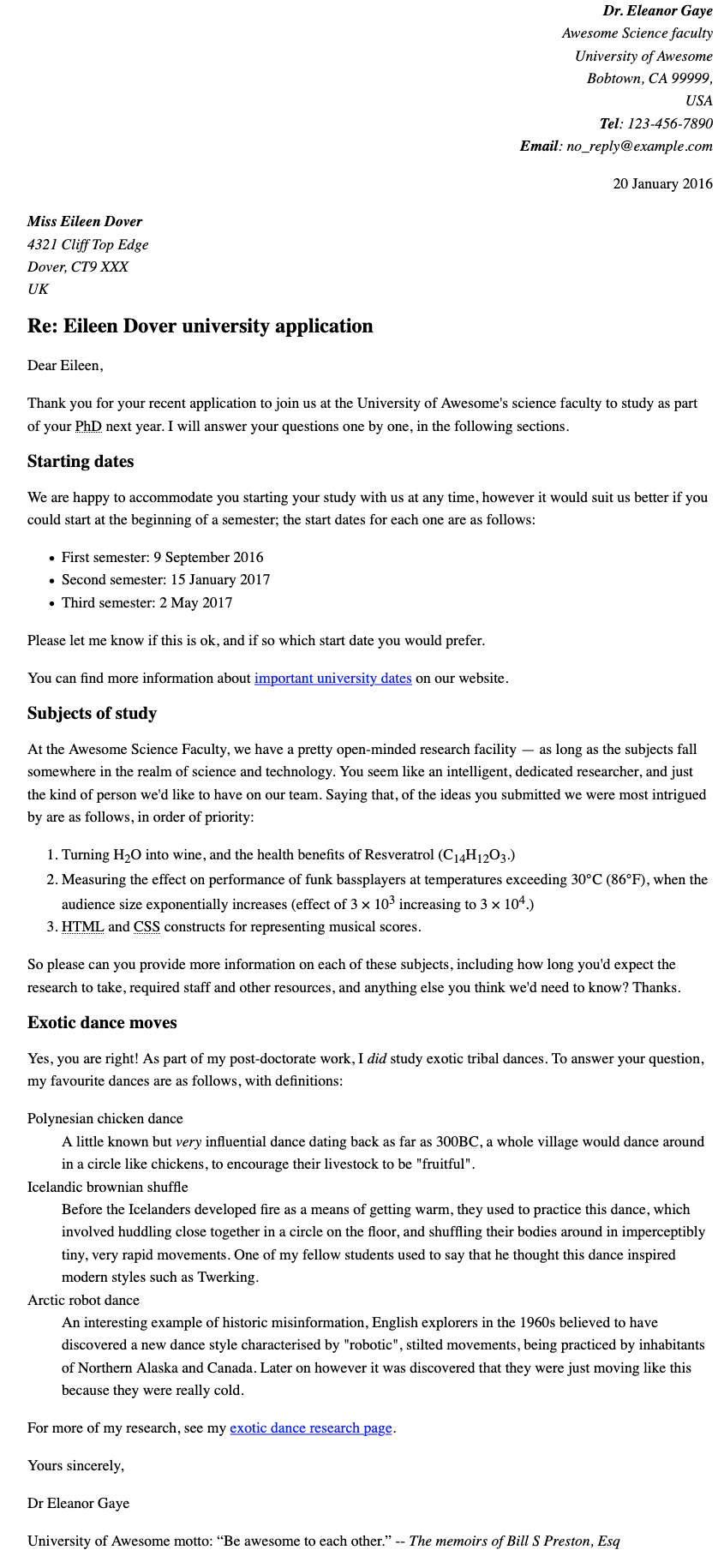Marking up a letter
We all learn to write a letter sooner or later; it is also a useful example to test our text formatting skills. In this assignment, you'll have a letter to mark up as a test for your HTML text formatting skills, as well as hyperlinks and proper use of the HTML <head> element.
| Prerequisites: | Before attempting this assessment you should have already worked through Getting started with HTML, What's in the head? Metadata in HTML, HTML text fundamentals, Creating hyperlinks, and Advanced text formatting. |
|---|---|
| Objective: | Test basic and advanced HTML text formatting, use of hyperlinks, and use of HTML <head>. |
Starting point
To begin, get the raw text you need to mark up, and the CSS to style the HTML.
Create a new .html file using your text editor or use an online editor such as CodePen, JSFiddle, or Glitch.
Note: If you get stuck, you can reach out to us in one of our communication channels.
Project brief
For this project, your task is to mark up a letter that needs to be hosted on a university intranet. The letter is a response from a research fellow to a prospective PhD student concerning their application to the university.
Block/structural semantics
- Use appropriate document structure including doctype, and
<html>,<head>and<body>elements. - In general, the letter should be marked up as an organization of headings and paragraphs, with the following exception. There is one top level heading (the "Re:" line) and three second level headings.
- Use an appropriate list type to mark up the semester start dates, study subjects, and exotic dances.
- Put the two addresses inside
<address>elements. Each line of the address should sit on a new line, but not be in a new paragraph.
Inline semantics
- The names of the sender and receiver (and Tel and Email) should be marked up with strong importance.
- The four dates in the document should have appropriate elements containing machine-readable dates.
- The first address and first date in the letter should have a class attribute value of sender-column. The CSS you'll add later will cause these to be right aligned, as it should be in the case in a classic letter layout.
- Mark up the following five acronyms/abbreviations in the main text of the letter — "PhD," "HTML," "CSS," "BC," and "Esq." — to provide expansions of each one.
- The six sub/superscripts should be marked up appropriately — in the chemical formulae, and the numbers 103 and 104 (they should be 10 to the power of 3 and 4, respectively).
- Try to mark up at least two appropriate words in the text with strong importance/emphasis.
- There are two places where the letter should have a hyperlink. Add appropriate links with titles. For the location that the links point to, you may use
http://example.comas the URL. - Mark up the university motto quote and citation with appropriate elements.
The head of the document
- The character set of the document should be set as utf-8 using the appropriate meta tag.
- The author of the letter should be specified in an appropriate meta tag.
- The provided CSS should be included inside an appropriate tag.
Hints and tips
- Use the W3C HTML validator to validate your HTML. Award yourself bonus points if it validates.
- You don't need to know any CSS to do this assignment. You just need to put the provided CSS inside an HTML element.
